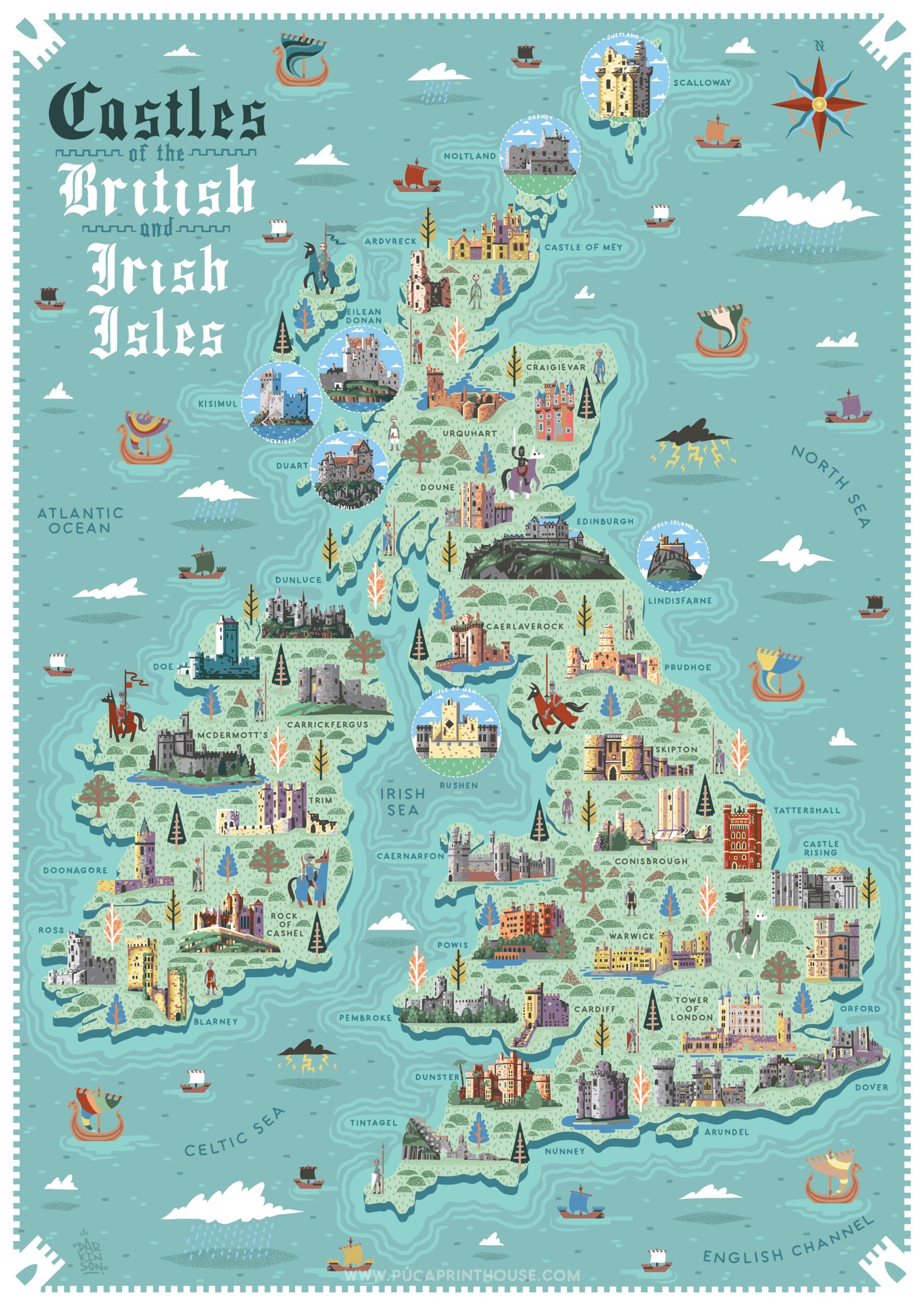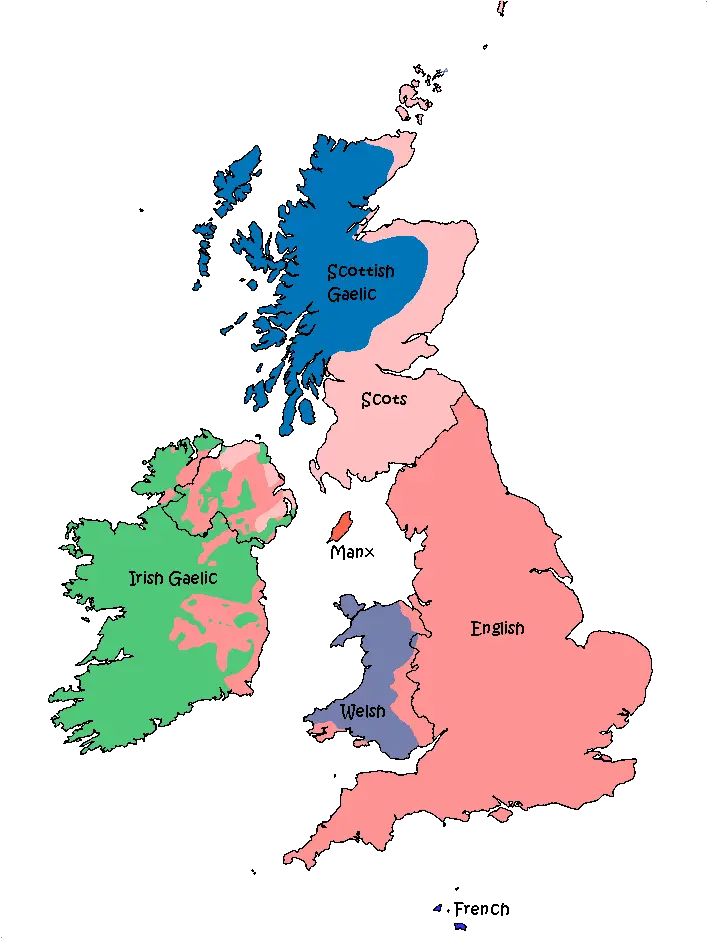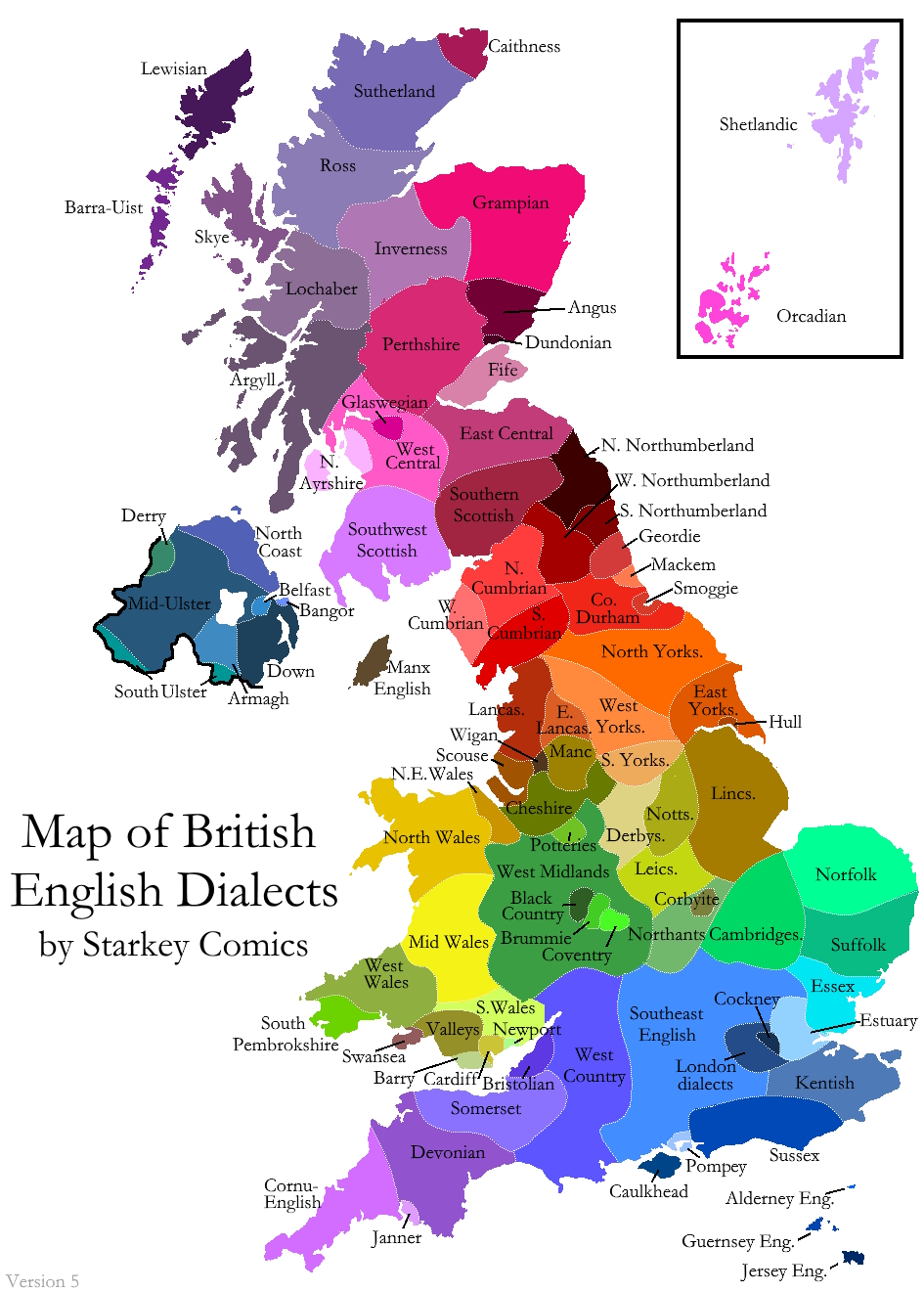National Identity in the United Kingdom
National identity in the United Kingdom is a complex and multifaceted concept that has evolved over centuries, shaped by historical events, cultural influences, and political changes. At its core, the idea of British identity encompasses a shared sense of history, values, and traditions among the diverse nations that make up the UK: England, Scotland, Wales, and Northern Ireland.
The United Kingdom has a rich history that has played a crucial role in shaping its national identity. The development of a sense of Britishness can be traced back to events such as the Acts of Union in the 18th century, which united England and Scotland, followed by the inclusion of Ireland in the 19th century (though Ireland later gained independence, leaving Northern Ireland as part of the UK). These historical milestones laid the foundation for a unified political entity, but the individual nations within the UK have retained distinct cultural identities.
The map below shows national Identity in the United Kingdom from the 2011 Census.
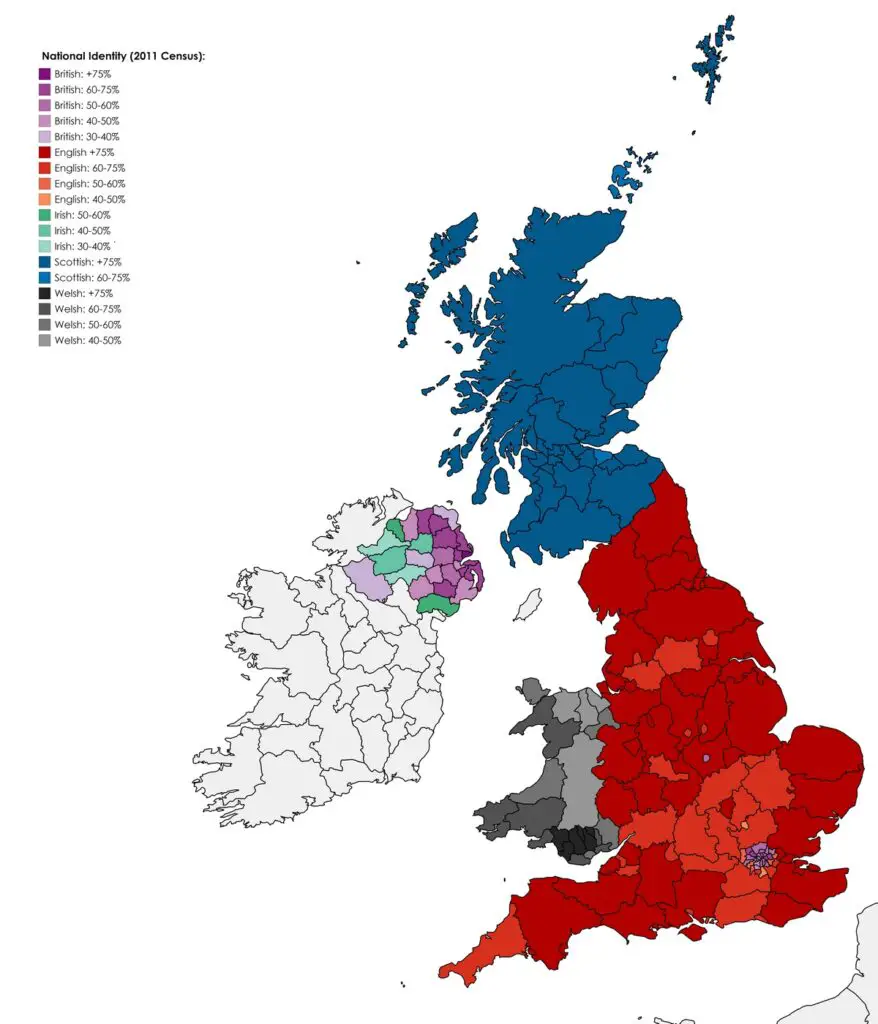
In England, the urban and rural divide is a prominent spatial aspect. Major cities like London not only serve as economic and political hubs but also embody a diverse and cosmopolitan identity, reflecting the historical influences of immigration and global connections. Conversely, rural areas contribute to a narrative of traditional Englishness.
Wales exhibits spatial features that highlight both unity and regional distinctiveness. The linguistic divide between Welsh-speaking and English-speaking communities contributes to a spatially nuanced identity. Regions such as North and South Wales have unique cultural expressions, and the spatial distribution of Welsh speakers reflects the ongoing efforts to preserve the Welsh language, especially in the western and northern parts of the country.
In Scotland, the spatial aspects of national identity are closely tied to the historic division between the Highlands and Lowlands. The rugged terrain of the Highlands and the urbanized Lowlands have distinct cultural traditions, with the former often associated with Gaelic language, clan heritage, and a romanticized vision of Scotland. Cities like Edinburgh and Glasgow serve as cultural and political centers, each contributing to a multifaceted Scottish identity that is both rooted in history and open to modern influences.
Northern Ireland‘s spatial features are intricately linked to its complex history and the religious and political divisions that have shaped the region. The spatial distribution of Catholic and Protestant communities, often concentrated in specific neighborhoods and cities, reflects the historical tensions and identities tied to Irish nationalism and British unionism. Cities like Belfast and Derry/Londonderry have been focal points for spatial expressions of national identity, with murals, flags, and other visual markers conveying political and cultural allegiances.
The maps below shows religion and national identity in Northern Ireland.
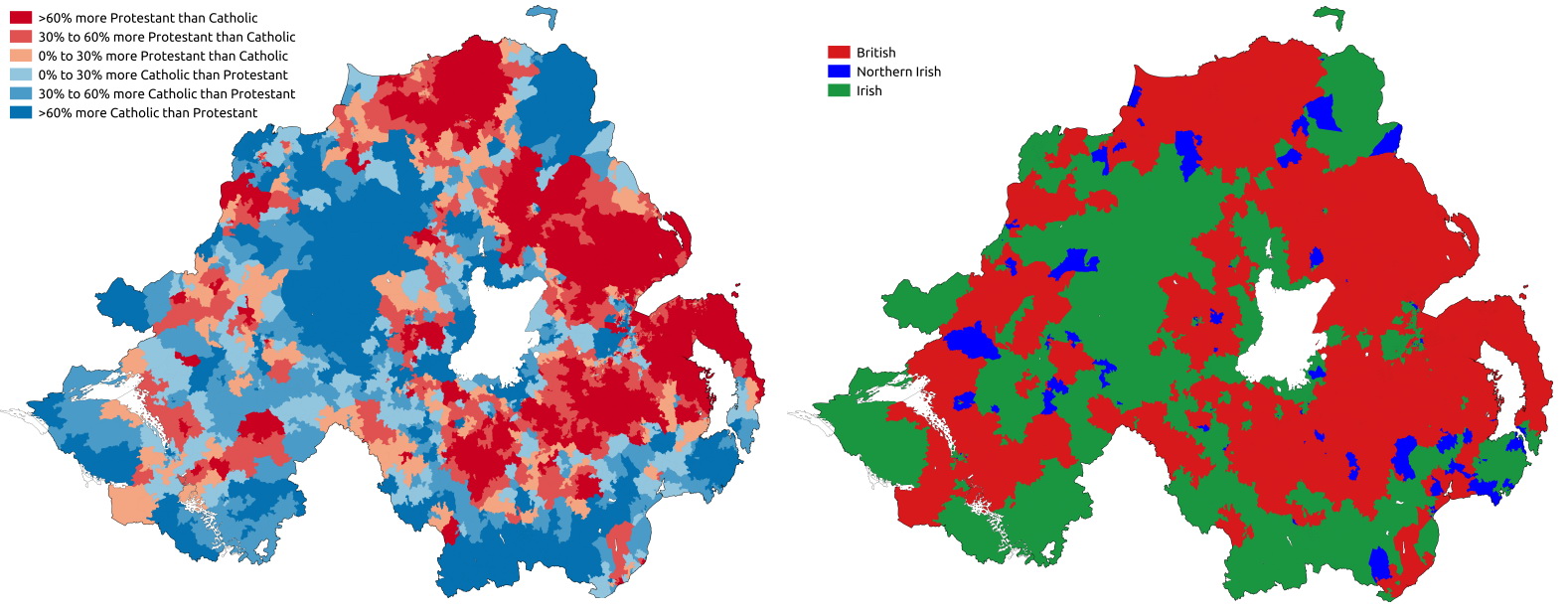
You can learn more about the national identity in Britain from the following books:

